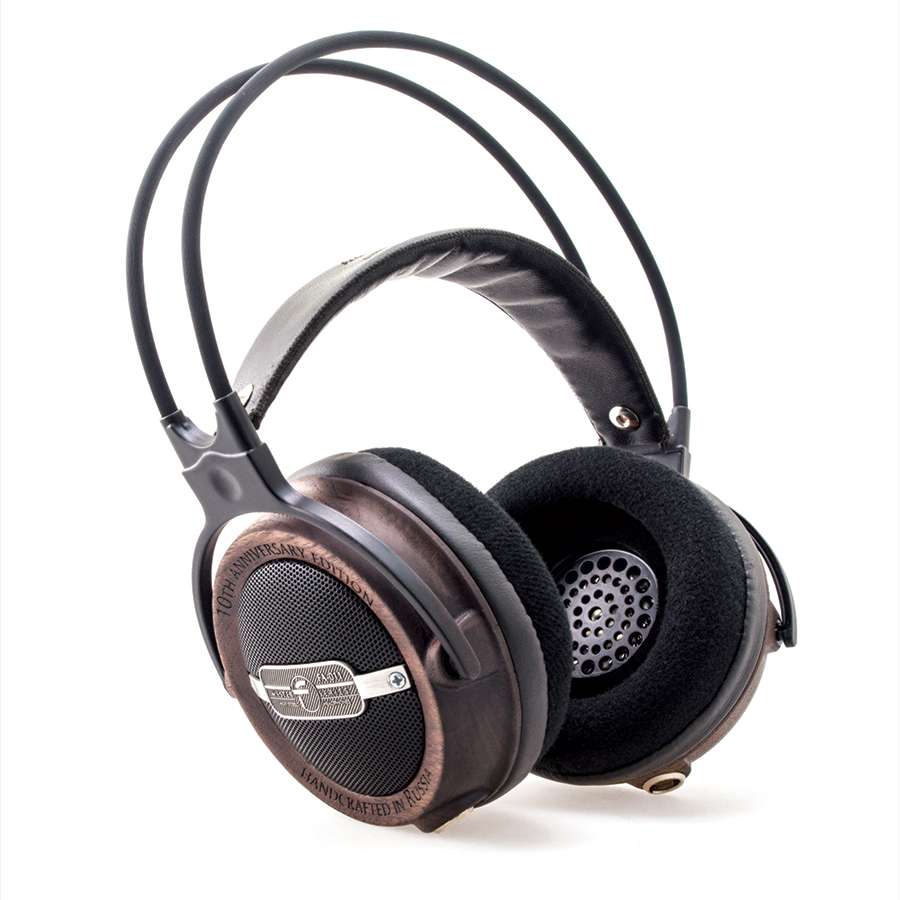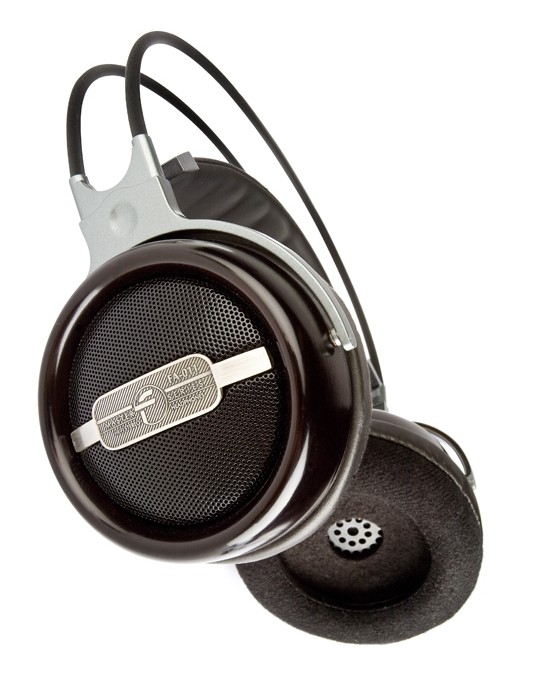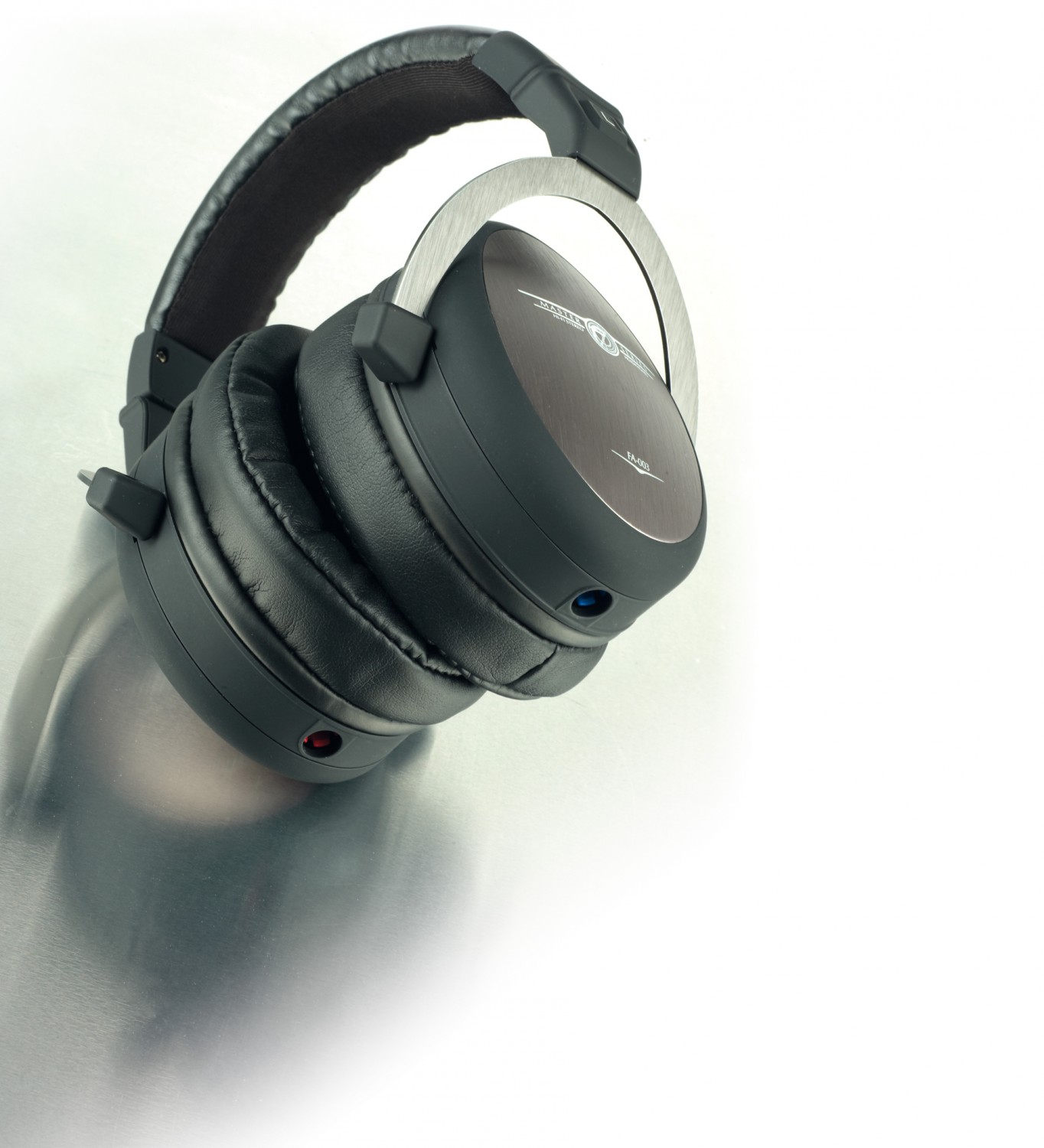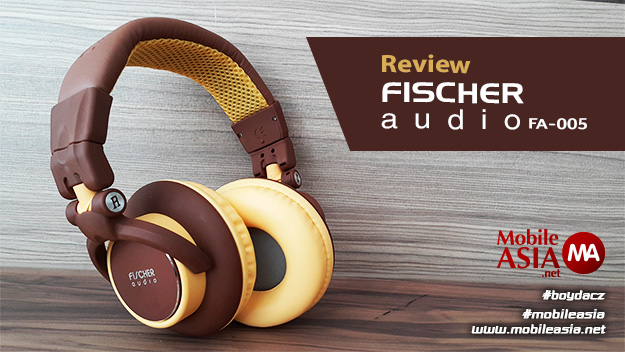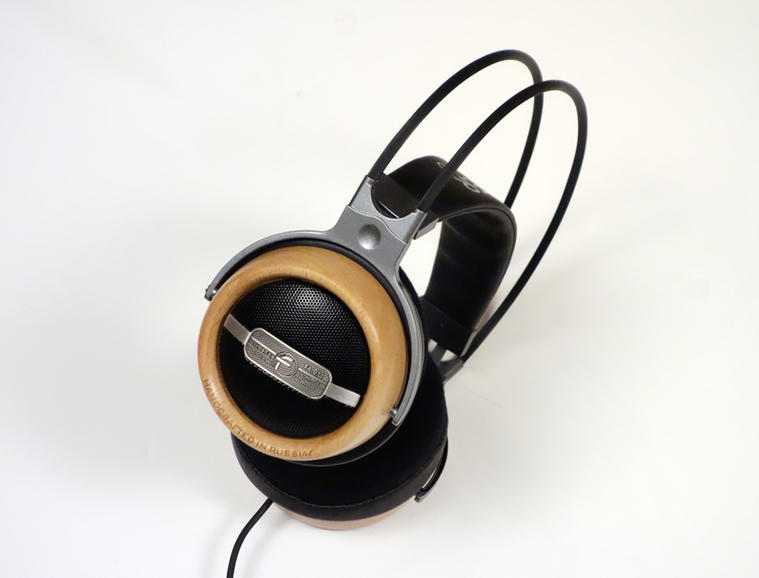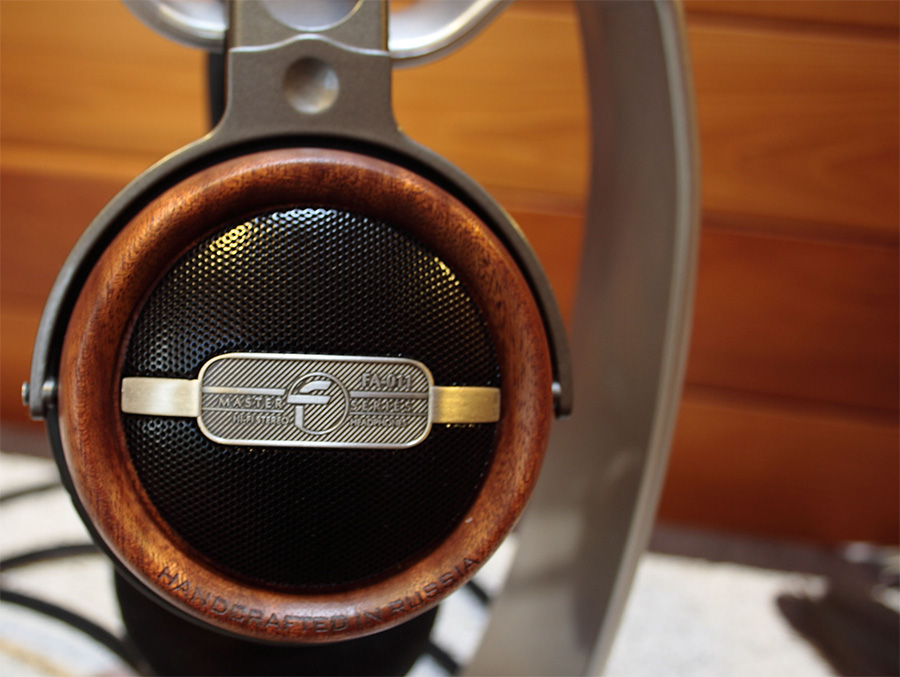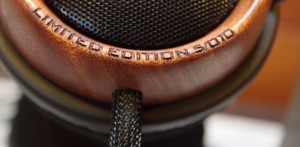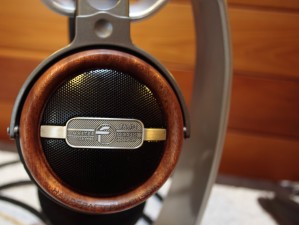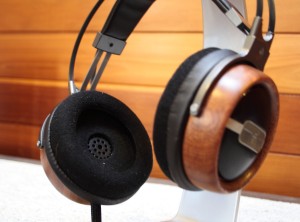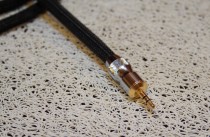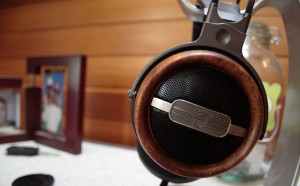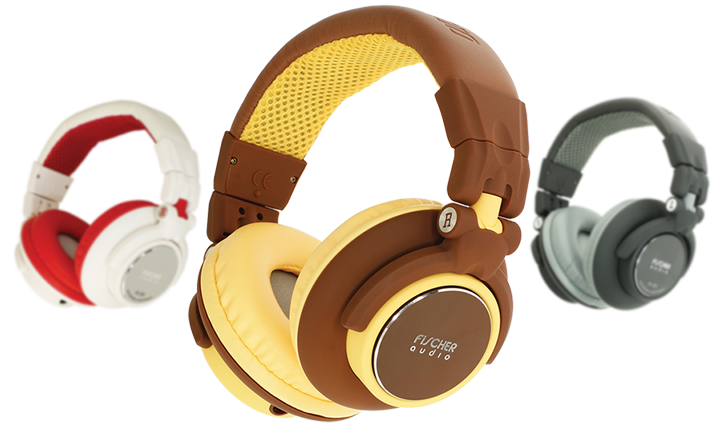The Russians Are Coming
Fischer Audio FA-002W Master Series High Edition Headphones
Fischer Audio is a relatively new European headphone manufacturer whose performance aspirations are high, but whose products are not yet well known in the U.S. Judging by the sample of the firm’s flagship Master-Series FA-002W High Edition headphone ($395) reviewed here, however, Fischer is a name that headphone enthusiasts will want to get to know, and for all the right reasons. But first, some background is in order.
The Fischer Audio web site (www.fischeraudio.com) says only that the firm “was born when the expertise of four professionals decided to join forces.” As best we can tell, at least one of those professionals was German, as the official name of the firm is—in traditional German style—Fischer Audio, GmbH. However, it is also apparent that the firm has roots (and, it would seem, manufacturing headquarters) in Russia, since our review sample ‘phones shipped from an office in St. Petersburg in the Russian Federation. Accordingly, documentation for the FA-002W headphones came printed in Russian (complete with the obligator Cyrillic alphabet) and in English.
As you might expect, you can see both German and Russian influences in the FA-002W ‘phones, which offer both a clear, precise sound and a certain fineness of fit and finish that reminded me of upper-tier designs from German firms such as Beyerdynamic and Sennheiser, yet also exude wonderfully Russian qualities of soulfulness and strength. Indeed, the overall vibe of the Fischers reminded me of some of the rugged yet elegant and sophisticated Russian submariner’s wristwatches I’ve admired in the past. When you first lift the FA-002W’s from their padded travel case, then, you can’t help but feel that you’re holding headphones of substance whose beauty runs more than skin deep (there is nothing flimsy or cheaply-built in this product).
The FA-002W is a closed-back headphone whose ear cups are precisely machined from exotic hardwoods (several options are available) and that offers high sensitivity (105dB) and presents–in the special High Edition model–a medium-to-high impedance load (200 Ohms). Fischer also offers a lower impedance version of the FA-002W plus an open-back version called the FA-002, but for now we will focus on the closed-back High Edition model. As you’ll see in a moment, the FA-002W High Edition makes an impressive entry in this keenly contested market segment.
FEATURES
• Closed-back design: The FA-002W is a closed-back design featuring precisely machined hardwood ear cups. According to Fischer 23 different wood options are possible, many of which will be offered in the USA, including Rosewood, Zebrawood, Snakewood, Bubinga, Karelian Birch, Paduk, and more. Our samples came in a lovely dark red hardwood called Amaranth.
• Headband/Frame: The adjustable headband of the FA-002W features what appears to be a beefy spring-steel top strap that fastens via robust mounting brackets to articulated, molded thermoplastic ear cup “arms,” which are finished in gloss metallic gray. The only potential drawback I could see was these arms allow the ear cups to swivel vertically, but not from side-to-side. As mentioned above, the headphone looks and feels sturdy and very well built, as if meant to stand up to years of use.
• Leather Padding in All the Right Places: The top strap of the FA-002W features a nicely made leather pad whose inner surface features a fabric liner that gently caresses the top of your head. The ear cups, in turn, feature soft, thick, leather-covered ear pads that are extremely comfortable to wear and that achieve a much better than usual degree of isolation from external noises. The only price to pay for this sense of isolation, however, is that clamping pressures with this headphone are higher than many others in its class—though not to a degree that I personally found at all uncomfortable. So, let’s simply say the fit is “snug.” Our review samples came with an alternative set of fabric-covered ear pads, recognizing that some prefer the feel of fabric to leather.
• Signal cables/connectors: Fischer provides a detachable, 3.5-meter “Y-shaped signal cable. The cable features a gold-plated 3.5mm plug and a threaded ¼-inch phone plug adapter, also gold-plated.
• Case: The FA-002W comes with a heavily padded, canvas-covered travel case. How sturdy is it? Let’s just put it this way: The Fischer headphones shipped in this case, with no outer box whatsoever, within a thin, plastic Russian Federation postal pouch, and made it all the way from St. Petersburg, Russia to Austin, TX without the slightest hint of damage.
• Warranty: Never let it be said that the Russians and/or Germans lack a sense of humor. On the Fischer Warranty card, the company includes a brief list of types of product failure not covered by the warranty, including these:
“…circumstances out of the control of Fischer Audio, including, with out limitation, fires, storms, earthquakes, floods, stupidity or maniacal stubbornness. Failure caused by the acts of God, fall of asteroid, Martian attacks, hungry piranhas and/or swallowing by Ravenous Bugblatter Beasts of Traal, is covered by Fischer Audio if such accident has been proven.”
Hey, you can’t make this stuff up.
SONIC CHARACTER
One of the things I learned early on is that the “characteristic sound” of the FA-002W tends to be somewhat more amplifier-dependent than is the case with some other headphones in its price class. On paper, nothing would suggest that the Fischers are difficult to drive, though their impedance rating of the High Edition model is higher than some, but in practice they worked significantly better with some amplifiers than others, meaning it will be worth your while to spend time finding a good match. Two specific amplifier recommendations would be the Burson Audio HA-160 and HiFiMAN EF-5, both of which gave great results with the Fischer headphones.
Heard at their best, the FA-002W’s turn out to be one of the most impressive offerings in the sub-$700 price class. Here’s why. For starters, the Fischers give you everything you would expect from a fine closed-back design, such as very effective noise isolation and taut, deep, well-controlled bass. At the same time, however, the Fischer’s somehow manage to produce the sort of vibrant, transparent, and dynamically free-flowing sound that many listeners associate with today’s better open-back designs. If you’ve bought in to the myth that closed-back ‘phones invariably sound a bit compressed and overly tightly constrained, the Fischers will quickly make you change your mind, in part because their sound is remarkably open and fine-grained—especially so in light of their less-than-stratospheric price.
Highlights include terrific purity of timbres and some of the finest resolution we’ve heard from any dynamic driver-based (as opposed to planar magnetic driver-equipped) headphone in this class. These qualities are further underscored, as you might expect, by the very quiet listening backgrounds these closed-back ‘phones provide. Frequency response is very smooth, though I think some listeners might perceive the FA-002W’s overall tonal balance to be tipped just slightly to the warmer (or “darker”) end of the audio spectrum. This perception is influenced by the fact that—if you choose your amplifier carefully—the Fischer’s’ bass will be quite deeply extended and powerful, though never loose sounding or under-damped. Similarly, the headphones’ highs are, or at least can be with the right amplifier, pleasantly extended yet almost eerily smooth. Listeners who equate faint traces of treble edginess with “accurate highs” may mistake the Fischer’s’ smoothness for treble rolloff, which I think is not the case.
One point I would like to emphasize is that the FA-002W’s midrange presentation is remarkably energetic, dynamically expressive, and alive. I believe this is partly attributable to the headphone’s midrange transient speed, which is excellent, but also attributable to the apparent ease with which the headphone delivers “energy on demand” when high-powered transient sounds come along. Two good examples might be the almost volcanic eruptions of sound that occur, say, when a snare drum is struck forcefully or an electric guitar is plucked vigorously. Under such circumstances, the Fischers speak with real authority and punch, making some competitors sound almost “choked” by comparison. Some might feel, in fact, that the Fischer’s’ transient response can be—especially in the midrange—a little overwrought at times (though I find this problem arises only when using amplifiers that are inadequate to drive the FA-002W in the first place). Even so, the power and force with which midrange transients ramp up in energy can be a little unnerving at first—though I personally feel this is also a quality that helps make the Fischers consistently expressive and enjoyable over the long haul.
Put all of these qualities together and you have what we regard as one of the most compelling mid-priced headphones we have heard in a long time.
MUSICAL EXAMPLES
We could probably cite dozens of examples to illustrate the sonic qualities we sketched above, but in hopes of being concise we’ll limit ourselves to just two.
To hear both the subtlety and sheer power of the FA-002W on display at the same time, play “Tin Pan Alley” from Stevie Ray Vaughan’s Couldn’t Stand The Weather [Sony Legacy]. On this track Vaughan’s famous backing band Double Trouble provides percussion work that is at once subtle and delicate, yet high in impact, plus rock-solid low-frequency bass guitar support. But most of all, you’ll hear the full range of both Stevie Ray Vaughan’s voice and his famous Fender Stratocaster guitar, which has perhaps never been captured more powerfully or eloquently than on this track.
Listen carefully to the way the Fischer’s handle the sound of the drum kit, and you’ll be floored by how distinctively they present (and effortlessly they differentiate) the voices of each individual drum and cymbal. Where some headphones leave you somewhat in the dark as to how players are managing the dynamics of their instruments, the FA-002W’s show you exactly what is going on. On the bass guitar, the Fischers reveal both the instrument’s sheer depth and weight, while also showing you bassist Tommy Shannon’s deft touch and timing on the fingerboard, which means the right supporting notes always appear at precisely the right moments and with just the right level of emphasis (or de-emphasis, as the situation warrants).
But it is Stevie Ray’s Stratocaster that steals the show, in part because the Fischers are able to show how the instrument can—in the master blues man’s hands—speak with soft, almost subliminal runs of notes and trills at one moment, and then turn on a dime to fairly explode with fierce outbursts of sound in the next moment. In it’s ability to capture stark dynamic contrasts like these, the FA-002W High Edition reminds more than a little of the sound of today’s superb planar magnetic headphones, which are real champs in this area. Sure, most headphones manage to get louder when electric guitars are cranked up, but they don’t always capture the explosive rise in energy and acoustic power as immediately or as effectively as the Fischers do. Given the veritable guitarist’s “master class” that Stevie Ray Vaughan put on in this track, its almost inevitable to fall under the Fischer’s’ spell, so that even if you plan to listen to “Tin Pan Alley” for just a few minutes, you may wind up listening to it from end to end, simply because the sound is addictive and compelling.
Next, let me reference another audiophile favorite that showcases many of the FA-002W’s strengths: namely, the jazz standard “Bye Bye Blackbird” from Patricia Barber’s Nightclub[Mobile Fidelity Sound Lab, SACD]. This is a track that, admittedly, tends to sound very good on most headphones, but what the Fischer’s made be realize all over again is how very intimate and realistic the MFSL/SACD version of this record really is. Literally everything about this recording is not merely good (or even very good), but downright great—as the FA-002W helps you realize. If you listen carefully, which the Fischers certainly invite you to do, you’ll hear distinct variations in touch as Barber’s fingers work across the piano keyboard, subtle variations in finger pressure, attack, and release as Marc Johnson works his magic over the fingerboard of his acoustic bass, and the sure, deft, precise and yet expressive feel that percussionist Adam Nussbaum supplies as he crafts the rhythms that drive the song forward. My point, here, is that you don’t just hear instruments at play, per se, but rather hear the ultra-subtle sonic cues that let you know these performers are listening intently to one another and responding accordingly—together creating a group sound that is greater than the sum of its parts. It takes a very fine headphone to let you hear this kind of group expression, craftsmanship and communication, and it is one of the things separates truly fine headphones from merely good ones.
Most of all, though, listen to the way the Fischers capture the intricacies of phrasing, articulation, enunciation, and tone that Barber brings to her vocal lines in this song. Like many writers, I suppose, I’ve sometimes used the words “smoky” or “sultry” to describe Barber’s voice, but the Fischer’s invite you to make finer distinctions than that—revealing delicate shades of tonality that show why, where, and how Barber shapes her vocals to convey those qualities of “smokiness” or “sultriness.” All of this is perhaps a roundabout way of saying that the Fischer ‘phones have sufficient resolving power and finesse to take you deep within the innermost recesses of recordings to see what really makes the music tick.
CONCLUSION
Consider this headphone if: you want a mid-priced, high performance, closed-back headphone that combines the best sonic elements of both closed-back and open-back designs. Consider this headphone if you like the idea of a headphone that is for the most part accurate, yet never sterile-sounding or overly tightly constrained. This headphone offers extremely good resolution and fine-grained sound for the money, and is—or with the right amp can be—extremely dynamically expressive. In short, one of the best mid-priced high-end ‘phones we’ve heard in a long time.
Look further if: you want a relatively light headphone; the FA-002W is comfortable, but a little too hefty for some tastes. Also look further if you aren’t prepared to match this headphone with an amp that can do it justice (the FA-002W tends to sound a bit thin, edgy and somewhat midrange-forward when driven by inadequate amps). Finally, look elsewhere if you prefer to stick with familiar and time-tested brands; Fischer is a comparatively “new kid on the block,” though one we think you’ll want to know better.
Ratings (relative to comparably priced headphones)
Tonal Balance: 9.5 (somewhat amplifier dependent)
Clarity: 9.5
Dynamics: 10
Comfort/Fit: 10
Sensitivity: 9.5 (but even so, the FA-002W is amplifier sensitive)
Noise Isolation: 9.5
Value: 9.5-10 (though only time will tell if Fischer products deliver the kind of unit-to-unit consistency and quality that are expected in this class)
BOTTOM LINE
The Fischer FA-002W is a wonderful debut product, and one that has immediately become one of our favorite dynamic driver-equipped designs in this price class.
We hadn’t received the FA-002W at the time we prepared Playback’s recent Editors’ Choice listings for headphones, but if we had it would certainly have won a place on our “Headphones Priced Between $250-$699” list. They’re that good.
SPECS & PRICING
Fischer Audio Master Series FA-002W Headphone
Frequency Response: 11Hz – 27kHz
Drivers: Details not specified
Sensitivity: 105dB (no reference power level specified)
Impedance: 200 Ohms
Weight: Not specified.
Warranty: One year, parts and labor.

